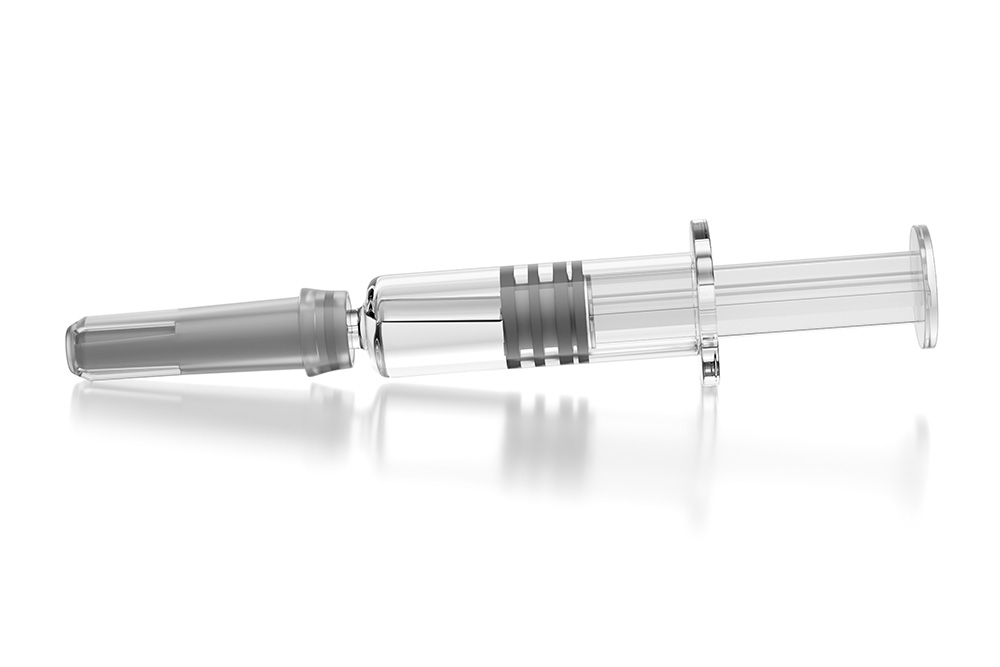Silicone oil droplets are a common particle type found in protein-based biotherapeutics, often seen in products packaged as prefilled syringes. Silicone oil is commonly used as a lubricant to facilitate administration. Other container-closure elements like rubber stoppers may also be lubricated with silicone oil and have the potential to introduce these droplets into the formulation.
Flow imaging microscopy (FIM) with FlowCam is ideally suited to analyze silicone oil droplets. Since they are visually distinct from other common particle types like protein aggregates, images of silicone oil can easily be differentiated and identified visually in a dataset and through image analysis tools like classification or artificial intelligence-based solutions such as VisualAI software for FlowCam.
Researchers often ask the question, 'Why monitor for silicone oil using FIM or any analytical technique?'
Although there is limited understanding of which characteristics of biotherapeutic particles pose a significant product safety concern, silicone oil generally has a lesser impact on safety than protein aggregates and other particle types. Therefore, the question arises—why not focus solely on monitoring non-silicone oil particles?
Like other particle types, silicone oil droplets can indicate changes in manufacturing processes that often warrant mitigation. Unexpectedly high or low silicone oil droplet concentrations can indicate issues with how container-closure elements were lubricated or how the final drug product was handled (e.g. unnecessary agitation) before analysis. Process deviations like these ultimately impact product quality in that the particle content of the final formulation has drifted off from what is typically present.
USP <1787> “Measurement of Subvisible Particulate Matter in Therapeutic Protein Injections” recommends controlling the amount and application of silicone oil in parenteral drug products. Flow imaging microscopy is recommended for this purpose and described in detail in USP <1788> “Methods for the Determination of Particulate Matter”
![]()
Pictured above, silicone oil droplets and other protein particles as imaged by FlowCam
Silicone oil droplets may also pose a safety risk due to their interactions with the active pharmaceutical ingredient (API). Proteins can adsorb to the oil-water interface of silicone oil droplets1, generating protein films and aggregates that would not otherwise be present in the formulation. In some studies2,3, protein-silicone oil complexes have been associated with increased immune responses to the therapy. Even if there is uncertainty about their effect on product safety, these studies suggest that changes in silicone oil droplet content are at least a risk factor to consider when making formulation or lot release decisions.
Alongside light obscuration and membrane microscopy, flow imaging is explicitly recommended as an orthogonal technique by USP <1788> to identify silicone oil droplets that are challenging to detect using compendial methods. Light obscuration (LO) can only differentiate between particles based on size but not type. As silicone oil droplets are often of similar size to protein aggregates and other common particle types, this technique will fail to differentiate particles based on their morphology.
In membrane microscopy and related techniques, silicone oil droplets pass through the membrane filter undetected. While this feature can be advantageous when paired with a solution-based measurement such as LO or FIM, in isolation, membrane microscopy will be unable to track potentially harmful changes in silicone oil content caused by process variations. As stated in USP <1788>, researchers must be able to detect and diagnose process shifts that result in deviated silicone oil droplet concentrations to preserve product quality—regardless of the impact on product efficacy.
Silicone oil droplets in biotherapeutics can indicate changes in process conditions and compromise product stability and potential safety through the generation of complexes and aggregates. Flow imaging with FlowCam helps scientists monitor, minimize, and control silicone oil droplets and their complexes to ensure the particle population in their protein drug products is consistent and safe.
Learn more and download our eBook on Flow Imaging Microscopy.
REFERENCES
- Gerhardt A, McGraw NR, Schwartz DK, Bee JS, Carpenter JF, Randolph TW. Protein aggregation and particle formation in prefilled glass syringes. J Pharm Sci. 2014;103(6):1601-1612. doi:10.1002/jps.23973
- Chisholm CF, Baker AE, Soucie KR, Torres RM, Carpenter JF, Randolph TW. Silicone Oil Microdroplets Can Induce Antibody Responses Against Recombinant Murine Growth Hormone in Mice. J Pharm Sci. 2016;105(5):1623-1632. doi:10.1016/j.xphs.2016.02.019
- Krayukhina E, Tsumoto K, Uchiyama S, Fukui K. Effects of syringe material and silicone oil lubrication on the stability of pharmaceutical proteins. J Pharm Sci. 2015;104(2):527-535. doi:10.1002/jps.24184










